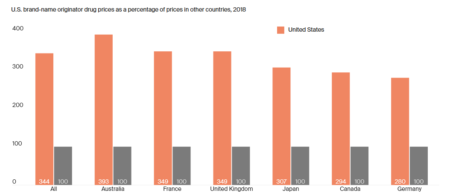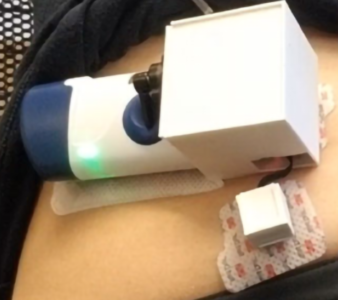The sheep are safe, latest dopey Covid cure, what you’ll be wearing, and more!
23 Nov 2021
Posted by Andrew Kantor
Let the cow chips fall
It’s hard to believe that, in 2021, someone actually has to say this … no, eating cow dung will not prevent Covid-19.

State-fair prep, or stocking the pharmacy shelves? You decide.
Cross one worry off your list
Like most people, you’ve probably woken up in the middle of the night thinking, “Can sheep carry the SARS-CoV-2 virus?” Your sleepless nights can end: Researchers at Kansas State University have done the work. “[S]heep show low susceptibility to SARS-CoV-2 infection,” they say in a newly released preprint.
That said…
Which animals are most likely able to carry the virus? A group of researchers from across the U.S. (who had a bit of extra computing power on their hands) investigated the “zoonotic capacity of SARS-CoV-2 for more than 5000 mammals.”
So, what critters should you worry about?
- Most primates
- American minks
- Pangolins and hyraxes
- Treeshrews, sloths, and anteaters
- Both odd- and even-toed ungulates including horses, rhinos, hippos, bison, and giraffes (but not whales)
The more you know.
Another year, another “The U.S. pays the highest drug prices in the world” story
This is from the annual report on drug pricing and spending from the Commonwealth Fund, and it gives the usual news: The U.S. pays more for prescription drugs than the next 32 modern nations combined. That’s adjusted for population. And no, we don’t use more drugs than other countries.
The big driver: brand-name drugs.
“Pharmaceutical spending is higher in the U.S. despite its greater use of less-costly generic drugs, which are cheaper in the U.S. than in other countries.
That’s right: Generics in the U.S. are cheaper than in other countries.
See you next year.

Covid tidbits
- Winter is coming (and with it a good chance for a surge).
- More Americans have died from Covid-19 in 2021 than in 2020.
- It’s probably seasonal … which means what?
- These new antiviral pills are great … if patients can get tested quickly enough.
Pharma fashion
Intercepting an overdose
People who think they might be at risk of an opioid overdose might soon have some wearable help, thanks to engineers from the University of Washington. They developed a proof-of-concept device, worn on the stomach, that senses the particular “life-threatening pattern of respirations that occur when people experience opioid toxicity,” and — if they also stop moving — injects naloxone.

You’ll hardly know it’s there.
Bone phone
Taking a cue from modern bridges and highways (which use sensors to predict an impending collapse), University of Arizona orthopedic researchers have created “an ultra-thin wireless device that grows to the surface of bone” to monitor damage or healing.
This could be particularly helpful in patients with conditions such as osteoporosis, since they frequently suffer refractures. Knowing how quickly and how well the bone is healing could also inform clinical treatment decisions, such as when to remove temporary hardware like plates, rods or screws.
Infection detector
Is that wound becoming infected? Why guess, when engineers in Singapore have created a wearable sensor that can be put on an open wound and — by looking for deoxyribonuclease given off by harmful bacteria — sound an alarm?
“The hope is that detecting infections more quickly will lead to treatment that can uproot an infection before it progresses,” although it’s not clear why they wouldn’t just treat the wound as if it’s infected in the first place. (Future versions could, they say, release antibiotics automatically.)
The Long(ish) Read: Music and the Brain edition
“Why researchers are turning to music as a possible treatment for stroke, brain injuries and even Parkinson’s” from the Conversation.
Music is believed to have long lasting effects on the brain, too. So much so that a musician’s brain is actually better connected than people who haven’t played music.
(May not apply to drummers, though.)


